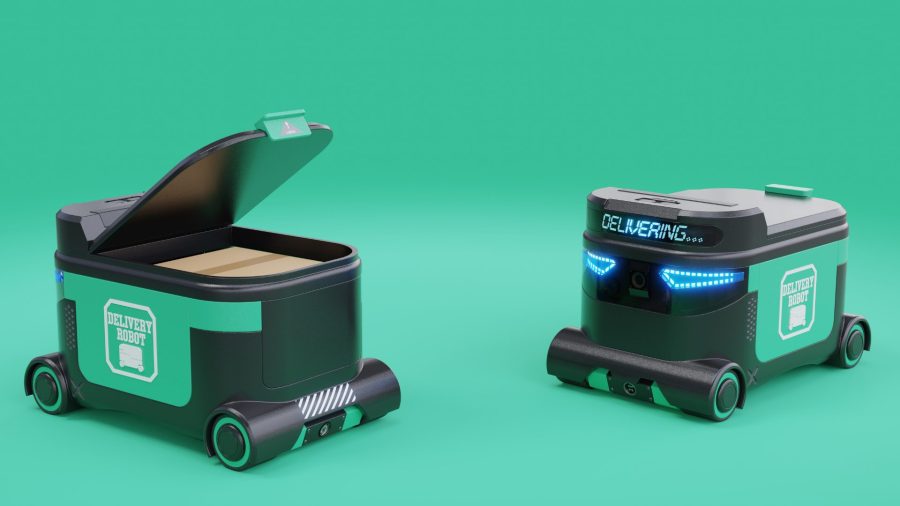What seemed like something straight out of science fiction just a few years ago is quickly becoming a reality for the food industry. Robots are now doing everything from picking, preparing and delivering supplies.
With that, The Food Institute decided to take a closer look at some of the companies making inroads in the food robotics space:
DELIVERY
Walmart has started using fully driverless trucking in its online grocery business, aiming to increase capacity and reduce inefficiencies. Walmart and Silicon Valley start-up Gatik said that, since August, they’ve operated two autonomous box trucks — without a safety driver — on a 7-mile loop daily for 12 hours, reported CNBC (Oct. 8).
Additionally, hundreds of robots are now navigating college campuses and city sidewalks. While robots were being tested in limited numbers before the pandemic, the companies building them say labor shortages and a growing preference for contactless delivery have accelerated their deployment, reported ABC News (Nov. 2).
Some recent developments include:
- Starship Technologies, which has more than 1,000 robots in its fleet, says it will deploy hundreds more soon. The bots currently deliver food on 20 U.S. campuses, with 25 more on the way.
- Kiwibot, now has 400 robots making deliveries on college campuses and in downtown Miami.
- Google was a surprise investor in autonomous driving platform Nuro during a recent $600 million Series D fundraising round, according to a Forbes report (Nov. 2).
- Serve Robotics, an autonomous sidewalk delivery company, announced a partnership with Uber Technologies. The on-demand robotic delivery service will be available to Uber Eats customers starting in Los Angeles early next year.
FOODSERVICE
Robots are taking over restaurant kitchens, too.
Miso Robotics – a foodservice automation startup – unveiled the newest model of Flippy, its robotic kitchen assistant.
Based on learnings and feedback from White Castle, which deployed the original Flippy to a location the Chicagoland area in 2020, Flippy 2 takes over the work for an entire fry station and performs more than twice as many food preparation tasks compared to the previous version including basket filling, emptying and returning.
In addition to White Castle, Miso Robotics has several other pilot agreements with national brands in place, including one with Inspire Brands which is testing a wing-making version of the robot for Buffalo Wild Wings, dubbed “Wingy,” at its Innovation Center in Atlanta, reported Restaurant Business (Oct. 21).
Wingy will late be installed in an Inspire ghost kitchen before making its way into an actual Buffalo Wild Wings next year, according to the companies.
Meanwhile, Paris-based Cala has raised €5.5 million in a seed funding round to fund an autonomous pasta-robot restaurant, reported The Spoon (Oct. 7). Cala’s robot is what can be called a fully operational restaurant in a box. It preps and cooks pasta, plates it, and cleans up afterward using a cartesian coordinate system robot.
AGRICULTURE
Iron Ox has unveiled a new robot for moving and monitoring indoor farming crops, reported TechCrunch (Nov. 2). The mobile robot, named Grover, is capable of lifting and moving up to 1,000 pounds of payload.
Dutch robotics company Priva unveiled Kompano, a pruning robot that can be deployed in a greenhouse alongside human employees, reported Fresh Fruit Portal (Oct. 19). The company says it is the first robot in the world that offers an economically viable alternative to de-leafing tomato plants by hand.
The company plans to expand the Kompano line with a leaf cutting robot for cucumbers and picking robots for tomatoes and cucumbers.












